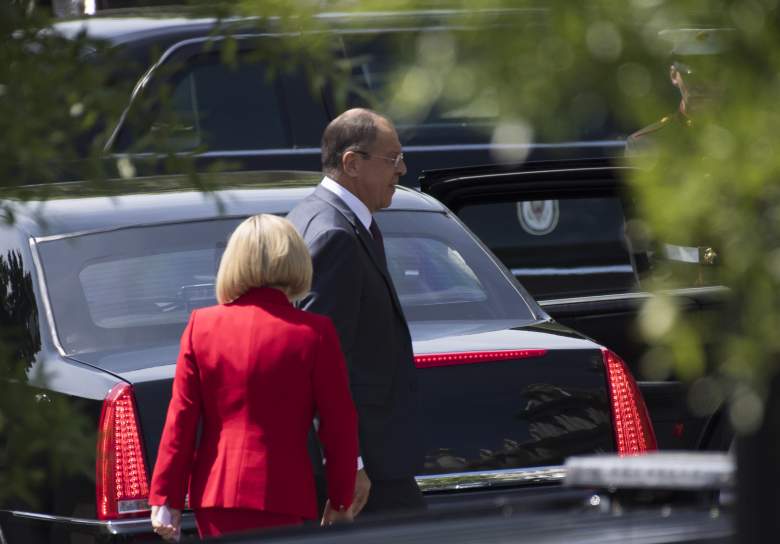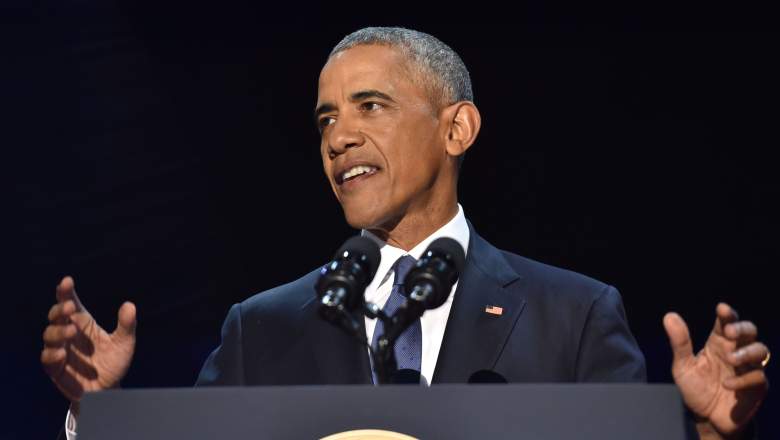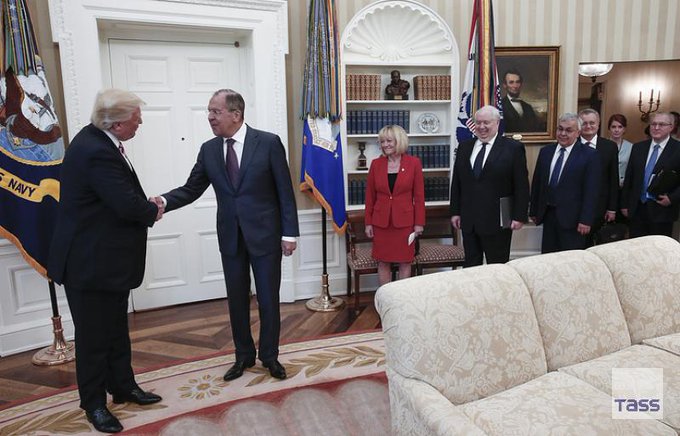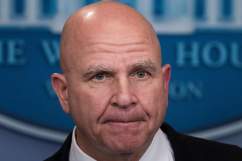
Russian Foreign Minister Sergei Lavrov leaves following a meeting with US President Donald Trump at the White House in Washington, DC, May 10, 2017. (Getty)
Supporters of President Donald Trump are hitting back at the Washington Post report that he shared “highly classified information” on ISIS with top Russian officials by arguing that President Obama basically did the same thing.
Is it true? Did President Obama share ISIS-related intelligence with Russia? There are differences between what the Washington Post alleges Trump said and what Obama offered. However, it’s true that President Obama offered to share more intelligence on the Islamic State and other terrorist groups with Russia because both Russia and the United States consider ISIS a common foe.
The White House and top Trump officials – most notably National Security Adviser Henry McMaster – adamantly deny the latest Washington Post report, with McMaster pointblank calling it false. More on that back-and-forth in a minute. First the Obama report.
The claim stems mostly from a Washington Post article by Karen DeYoung that ran on June 30, 2016.
The article was headlined, “U.S. offers to share Syria intelligence on terrorists with Russia.” Trump supporters ricocheted that old story around social media after the latest allegations broke:
The newspaper reported that the Obama administration had offered Russia what it was calling “enhanced information sharing” that “does not include joint military planning, targeting or coordination with U.S. airstrikes or other operations in Syria.”
According to The Post, the Obama offer came with conditions: “The Obama administration has offered to help Russia improve its targeting of terrorist groups in Syria if Moscow will stop bombing civilians and opposition fighters who have signed on to a cease-fire and use its influence to force Syrian President Bashar al-Assad to do the same,” the story reported.
State Department spokesman John Kirby said at the time, according to The Post: “We’ve made no bones about the fact that if the Russians, with their military presence in Syria, proved to be willing to focus those efforts against Daesh, then that’s a conversation we would be willing to have.”

Obama during his Farewell Address. (Getty)
In July 2016, the Post wrote another story titled, “Obama’s Syria plan teams up American and Russian forces.” The story, by Josh Rogin, reported, “The Obama administration’s new proposal to Russia on Syria is more extensive than previously known. It would open the way for deep cooperation between U.S. and Russian military and intelligence agencies and coordinated air attacks by American and Russian planes on Syrian rebels deemed to be terrorists.”
It’s not hard to find articles about the Obama administration contemplating more coordination with Russia in the fight against terrorism.
In 2015, Defense News reported that the head of the CIA was “determined” to “keep conversations open between the intelligence communities of the United States and Russia and wants to see relations between the two nations ‘enhanced’ to prevent future terrorist attacks, particularly from the Islamic State group, commonly known as ISIS or ISIL.”
John Brennan, Obama’s CIA director, said in that article that he was having ongoing conversations with “my Russian counterpart” over the previous year. According to Defense News, “those conversations have largely centered on the flow of potential terrorists between Russia and ISIS-controlled territory, a ‘very real concern’ for the Russians, Brennan said.”
Brennan was CIA director from 2013 through Trump’s inauguration.
Defense News quoted Brennan as saying, “So we’ve been exchanging information. I think it needs to be enhanced. But I am determined to continue to work with my Russian counterparts, because of the importance that I think we each can bring to this issue, in terms of our insights, our information, our data and sharing.”
How does that compare to the current report? There are key differences between the allegations; the Post alleges that Trump basically spoke out of school, off the cuff (not as a planned-out strategy) and shared classified information with the Russians that an ally had provided to the U.S. about terrorists using laptop computers as bombs.
The Washington Post is reporting that, although it wouldn’t be illegal for Trump to have done so, anonymous “current and former U.S. officials… said Trump’s disclosures jeopardized a critical source of intelligence on the Islamic State.” The Post’s anonymous source allegedly said that Trump “revealed more information to the Russian ambassador than we have shared with our own allies” and that Trump “had relayed sensitive information that had been shared with U.S. intelligence through a partner-sharing agreement with an unnamed ally… who had not given the U.S. permission to share it.”
National Security Adviser H.R. McMaster has flatly declared the Washington Post report false.

National Security Advisor H. R. McMaster. (Getty)
“The president and the foreign minister reviewed a range of common threats to our two countries, including threats to civil aviation,” McMaster said in a news conference on May 15. “At no time – at no time – were intelligence sources or methods discussed. And the president did not disclose any military operations that were not already publicly known…I was in the room. It didn’t happen.”
McMaster said Secretary of State Rex Tillerson and another senior official shared the same recollection of the conversation.
Washington Post reporter Greg Miller told CNN he stands by his story. In a subsequent analysis, The Post claimed McMaster and others were using semantics to help Trump, writing, “McMaster says that ‘at no time were intelligence sources or methods discussed.’ But The Post’s reporting doesn’t say that they were.”
The Post alleges that Trump “discussed an Islamic State plot and the city where the plot was detected by an intelligence-gathering partner. Officials worried that this information could lead to the discovery of the methods and sources involved, but it didn’t say Trump discussed them.”
The meeting took place on May 10 between Trump, Russian Foreign Minister Sergei Lavlov and Russian Ambassador to the U.S. Sergey Kislyak (the latter’s phone conversations with Michael Flynn helped spur his resignation).
“The Lavrov meeting was closed to the press and the only visual account we have of it thus far is via handout photos from the Russian government,” Jordan Fabian, of the Hill, wrote in a pool report after the meeting. “Those images show Trump also met with Russian ambassador Sergey Kislyak.”
White House officials “barred reporters from witnessing the moment,” reported The New York Times, which added that the Russians brought an “official photographer” whose snaps were soon disseminated by TASS.
You can listen to McMaster’s response here:

